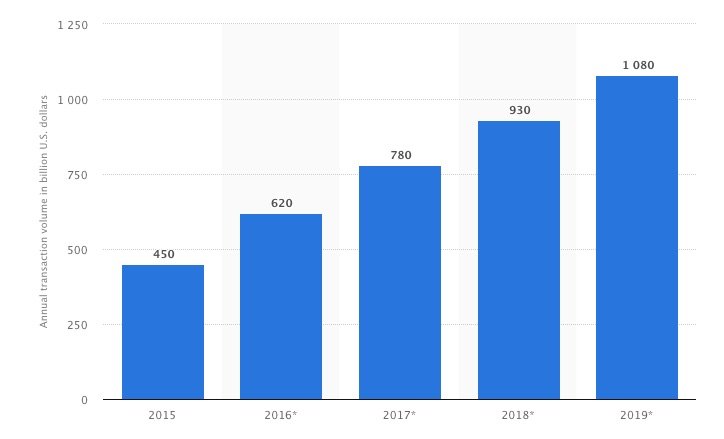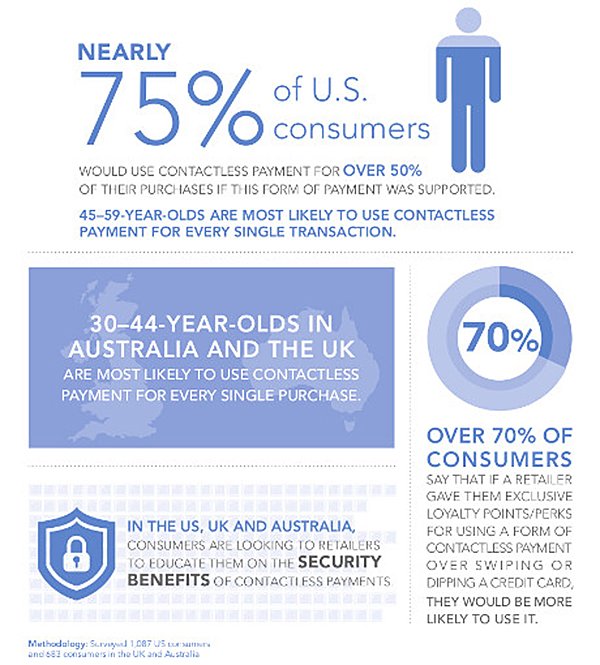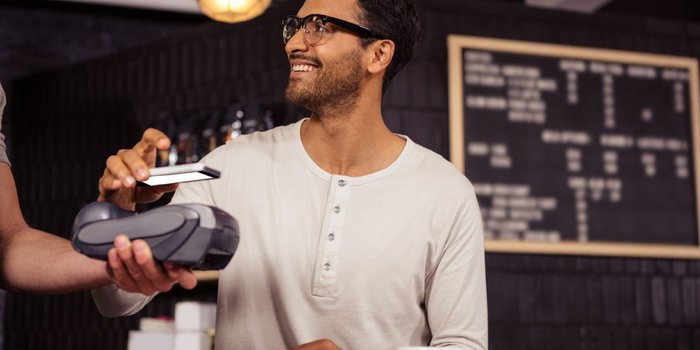5 Reasons Why Your Business Should Use Mobile Payments
The evolution of money looks like this: barter, coins, paper, plastic and now, phones. With the help of NFC (near field communication), companies are going to revolutionize the shopping experience and replace cash and credit cards with smartphones. People use smartphones to complete daily tasks including paying for goods and services. That’s why small businesses are encouraged to embrace mobile payments so that the customers can pay as easily as possible. Mobile payments encompass mobile wallets and mobile money transfers, both taking place through your mobile device. With the help of mobile payments, there is no need to fumble for cash, write out checks or wait for invoices. As the growth of Apple Pay and other NFC payment methods isn’t slowing down, adapting to mobile payment technology is extremely valuable for your business.
From the data below, we can see that the mobile payments market is gaining momentum. According to Business Insider, the usage of mobile payments among millennials will continue to increase. By 2020, it is expected to reach $503 billion. It is also suggested that by 2025, 75 percent of all financial transaction will be cashless. We can be sure that the times of searching for your wallet will no longer exist as all payments will instead be possible with a single touch. According to Statista, the total global revenue from the mobile payment market will reach $930 billion in 2018.

A report conducted by Mobile Payment World suggests that by 2020 the number of mobile payment users could increase up to 150 million. Among the most popular mobile payment systems are PayPal, Stripe, and Braintree. In 2016, PayPal processed 102 billion mobile payments.
If these numbers haven’t convinced you, here are the top five reasons why small businesses should adopt mobile payment technology.
1. It is the most convenient option for customers.
The first reason is pretty obvious: contactless payments are the most convenient transaction that can be completed a lot quicker. Mobile payments, then, allow for lower wait times at checkout which, in turn, improves the customer experience. Consumers can also access more accounts without the need to carry a physical wallet with all the different cards and cash. All the necessary data is stored in a mobile device.
In 2015, Business Insider conducted a research that revealed that 40 percent of millennials would switch to mobile payments and give up carrying cash. In Europe, Sweden is already on a way to a cashless society and expects to switch entirely to virtual or plastic payments by 2021.

2. It’s more secure.
Contactless payments are expected to surpass credit card transactions. Thus, most mobile payment service providers recognize the importance of strengthening the security of contactless payments. Using mobile wallets, such as Apple Pay, Android Pay or Samsung Pay, is more secure and reliable than using a payment card. For example, Apple Pay uses tokenization, a method aimed to encrypt customer data. Users download a mobile payment app and add credit card information to it. Consequently, the real card number is replaced with a token, which is not the real card number. The token is protected with a password or Touch ID. As the token is a not a real card number, it becomes idle for attackers. These steps increase the level of security and reduce the possibility of fraud. In case the phone be lost or stolen, the payment activity can easily be frozen.
3. It’s an opportunity to stay on top of new tech.
Recent research conducted by the consulting company Bain & Co states that “they [consumers] spend more than twice as much [money] through digital channels and tend to shop more often if they use mobile payments. Banks and retailers that move quickly will gain the interest and loyalty of the valuable consumers who are the primary early adopters of mobile payments.”
In 2016, Visa partnered with Honda for an in-vehicle payments system, which makes it possible for a driver to pay for parking and gas. Another example is a partnership between Mastercard, Samsung, and online grocery retailers to make an app that allows customers to order groceries directly from smart refrigerators. The use of mobile payments is a shift away from a card to an omnichannel future, where the payment methods will grow drastically. Businesses can get in on these trends early by incorporating mobile payments into their app or website.
4. It makes bookkeeping easier.
When you run a business, you need an easy accounting system that will allow you to invoice customers, pay bills, and share all your payments with the accountant. Introducing mobile payment solutions can help a business achieve better cash flow management. With the help of mobile payments, small businesses can reduce costs such as bank charges and overheads and can better evaluate their cash flow position.
Quite often businesses forget to record their transactions, which can lead to missed valuable expenses or even potential penalties. To help avoid it, there are a number of cloud accounting packages that allow managing finances from mobile.
With the help of mobile payments, your business accounting can be significantly simplified by:
- reducing time spent on bookkeeping tasks because everything is already in the system
- eliminating data entry
- avoiding a huge backlog of invoices and receipts
- saving time compared to using spreadsheets
- eliminating paper receipts and sending digital receipts to clients on the email address
5. It improves the customer experience.
People are ready to embrace mobile payments. Whether it is buying clothes or paying bills, people are more than ready and willing to accept a payment method that can help them to avoid wait times when paying for the goods and services. By providing an opportunity for customers to pay at any time, you provide not only a convenient solution but a payment experience.
As mentioned, mobile payments can speed up the checkout process, which goes beyond the mere ease of it. Instead, it has an impact on the entire customer experience. For example, retailers can increase their value during holidays when everyone is shopping and there are long queues at other stores.
If you are looking to start taking mobile payments, check out our mobile payment solution. 2.69% per swipe, No Setup Monthly or Hidden Fees, and Next Day Funding. First mobile reader is FREE, sign up in less than 5 min for free by clicking here.
Information provided by: Kate Kucherenko via Entrepreneur Magazine

